Epic tale remains a story worth telling
Legendary king's exploits continue to resonate across the highlands in western and northern China, Deng Zhangyu reports.
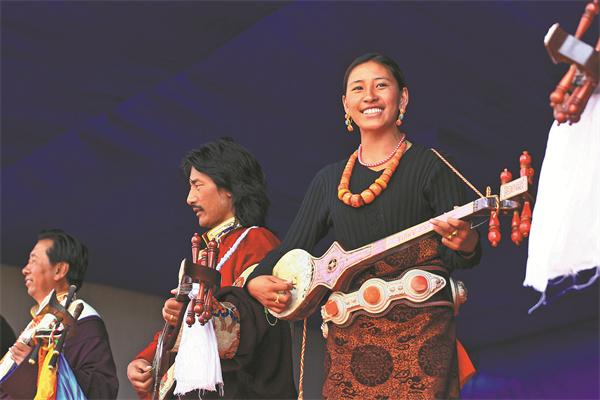
As lunchtime approaches, Sonam Tashi steps into a Tibetan restaurant in Lhasa, Xizang autonomous region, drawn by the enticing aroma of traditional dishes and a unique performance: a stage play about King Gesar, an ancient hero whose story is widely known on western China's Qinghai-Tibet Plateau.
On stage, two storytellers and a female performer, adorned in exquisite Tibetan attire, are playing classic excerpts from the epic tale.
They even weave comedic elements into the narrative, bringing the ancient legend to life in a way that resonates with modern audiences.
Sonam Tashi has worked at the Gesar research center of the Xizang Autonomous Region Academy of Social Sciences since 2016. He is impressed by these storytellers who present the legend in such an innovative way.
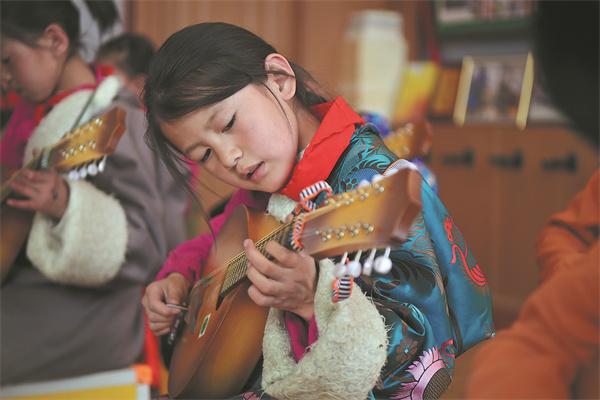
"A decade ago, performers would simply sing verses from the Gesar epic while seated or standing, often found in pastoral areas," he says. Today, however, these guardians of the Gesar epic tradition can be seen in teahouses, restaurants and theaters, thanks to sustained support from governments at all levels.
The Epic of King Gesar, passed down orally by singers and storytellers on the Qinghai-Tibet Plateau, is considered one of the longest "living" epics in the world. For centuries, storytellers have continued to sing it, weaving their own narratives into the ancient tale. It was inscribed on the UNESCO Representative List of the Intangible Cultural Heritage of Humanity in 2009.
The legend, dating back to the 11th century, recounts the adventures of King Gesar, a divine warrior who banishes demons, aids the vulnerable and unites the tribes.
"The structure and outline of the story are the same, but each storyteller brings his or her own unique version, enriched by individual experiences," says Sonam Tashi, who published 26 volumes recording various versions told by 26 storytellers last year.
A blend of history, myths, proverbs and folklore, the story of Gesar is regarded as an "encyclopedic" epic that integrates the culture, economy, customs and morality of many ethnic groups in China, including the Tibetan, Mongolian, Tu and Naxi.
In 2019, President Xi Jinping watched a group of singers performing excerpts from the Gesar epic at Chifeng Museum during an inspection tour of North China's Inner Mongolia autonomous region.
He stressed the importance of preserving and promoting the culture of ethnic groups. After talking with the performers, Xi pointed out that China is a unified multi-ethnic country, and the Chinese nation has been formed through continuous exchanges and integration among the 56 ethnic groups.
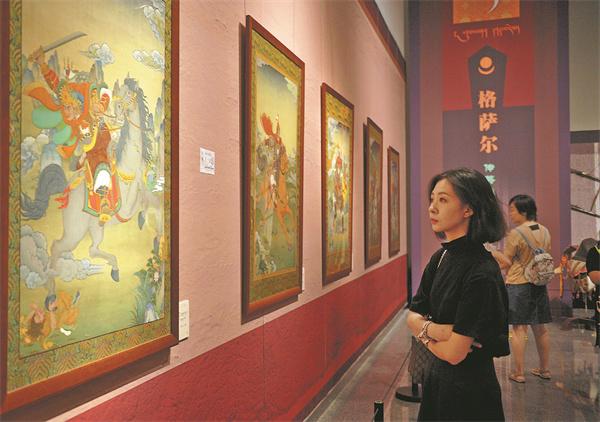
Dynamic evolution
Yeshe Ihamo, a researcher on Gesar at the Chinese Academy of Social Sciences, says: "The tale of King Gesar is a great epic jointly created by people of multiple ethnic groups. It's now told and sung in more than seven provinces and autonomous regions in China, mainly in Xizang, Inner Mongolia and Xinjiang Uygur autonomous region, as well as Sichuan, Qinghai and Gansu provinces."
Years ago, people living in remote pastoral areas didn't have many choices for entertainment. The Epic of King Gesar was a way for them to learn about the world and enjoy some entertainment.
The storytellers back then were like wandering minstrels, traveling from place to place and gathering many interesting stories. As they told the tales of King Gesar, they would mix in stories they heard from different places and share them with the local herders.
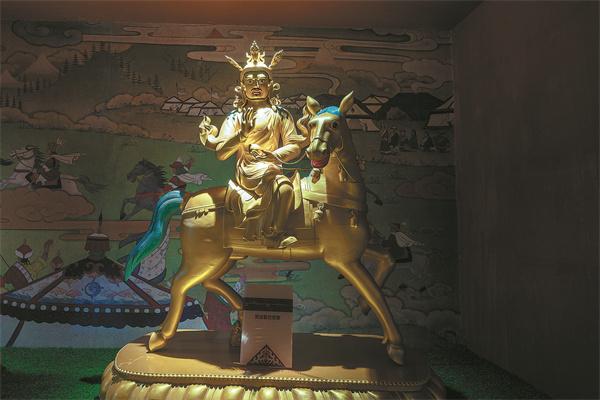
"The epic is dynamic and full of vitality, continuously growing over time. Like a river, it constantly branches out and then converges again," says Yeshe Ihamo.
"Everyone is telling his or her own story, and even now, the story hasn't ended."
In Sonam Tashi's published volumes documenting 26 unique stories, there are some interesting and creative ones. For instance, one story is about the mastiffs on the Tibetan plateau, covering their origins, various breeds and how they reproduce. In another, the storyteller recounts a segment rich with Tibetan tea customs and etiquette before the hero Gesar setting out on his expedition.
"Now, young inheritors add some modern elements into the ancient epic," he says.
In describing the war scenes involving King Gesar, young narrators use metaphors and imagery that resemble modern weapons like airplanes and cannons. For example, they might refer to "flying wooden birds" to depict aerial combat.
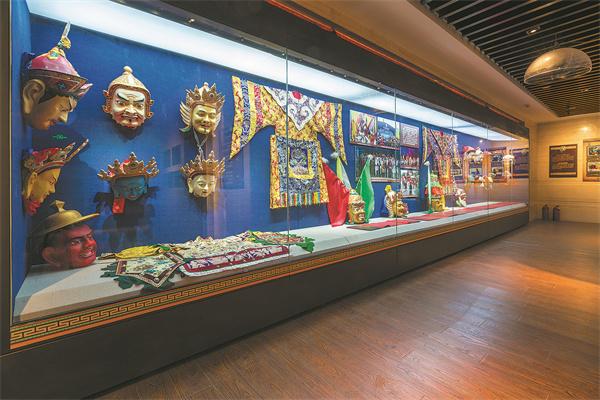
Due to the oral tradition and collaborative creation of the epic, determining its precise length is difficult.
In 2019, the Himalayan Encyclopedia, an online sharing platform of a digital Tibetan library, collected and compiled the epic, and jointly published The Complete Works of the Epic of King Gesar with the Sichuan Nationalities Publishing House and the Sichuan Fine Arts Publishing House.
This monumental edition spans 300 volumes and contains approximately 130 million words, offering a glimpse into the epic's immense scale.
Yeshe Ihamo has studied the epic at the Chinese Academy of Social Sciences since 2011. She says many institutions and scholars have published books to preserve it over the past decades, which were supported by the government.
Since the 1950s, China has initiated efforts to preserve The Epic of King Gesar. Research centers dedicated to the epic have been established in Xizang, Qinghai and Sichuan. These centers have brought together scholars and academic institutions to conduct specialized research and preservation work, including a long-term focus on talented storytellers, with endeavors to record and transcribe their oral traditions.
"Many local governments have started establishing databases and are utilizing digital methods to aid in its preservation. But storytellers are still critical for preserving and passing down the ancient legend," says Yeshe Ihamo.
Most elder storytellers are unable to read or write, but they can recite the king's tales for days. With their passing, the stories they once narrated and sang are at risk of being lost. Scholars and experts capture these singers on film as they perform in their later years, providing the sole means of preserving their renditions.
Thankfully, the younger generation is now taking on the task of preserving this cultural heritage, with help from local government funding.
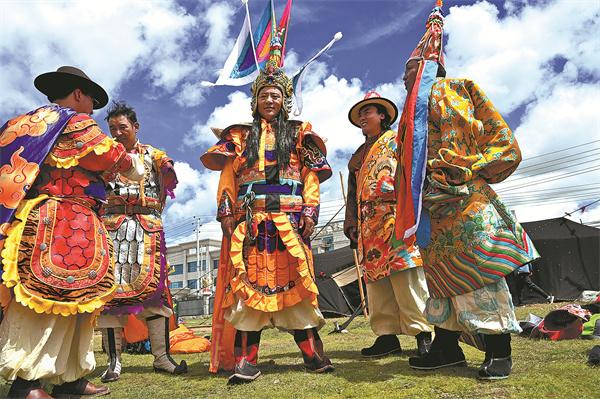
Sithar Dorje is the first storyteller to hold a master's degree. He was discovered to have the talent to recite thousands of verses of the epic when he was just 9 years old in his hometown of Palbar county in Chamdo city, Xizang.
Now 36, he's able to recite more than 140 episodes of King Gesar's story, equal to several million words. He once recited the legend for an entire day and night, without sleep.
"When I close my eyes to start singing and narrating the epic, I feel like I'm entering into another world where the king lives. I can see their faces and clothes. I even become one of the fabled characters," he says.
He was in constant demand to perform at weddings and parties when he was a teenager. Because of his talent in reciting the epic, Sithar Dorje has been funded by the region's government since middle school. He went to Xizang University in 2010 to study Tibetan history and literature and obtained a master's degree.
He frequently records his performances and dedicates most of his time to compiling recital episodes and conducting research, driven by a strong mission to preserve and promote the epic.
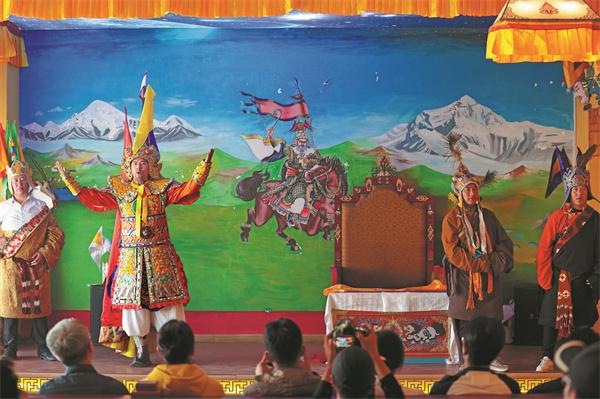
Reaching out
Storytellers like Sithar Dorje are rare, most of them are just part-time performers — they tend to their herds during the day and perform the epic in their free time, says Wancheng Tsering, who has kept a close eye on these storytellers over the past 18 years.
He visited hundreds of singers across the country and compiled their individual stories into a book, which records 303 inheritors of the Gesar epic and was published in February.
"When my book was published, one-fifth of those storytellers recorded had passed away," says the 44-year-old, who works at the Gesar Research Center of Qinghai province.
Wancheng Tsering grew up in a village in the Hainan Tibetan autonomous prefecture in Qinghai. As a child, he frequently heard his grandfather recount tales of King Gesar.
"Almost everyone living in the area knows the story of the legendary hero. Whenever there is a wedding or a major festive event, storytellers and singers are invited to perform for us," he says.
He notices that apart from singing and narrating the stories of Gesar, more innovative forms have emerged in recent years. The hero's image and story have been immortalized in sculptures, thangka (a traditional Tibetan Buddhist painting on embroidered silk), murals, woodcuts, embroidery, dances, plays, Tibetan opera, and even films and animations.
"Many places integrated the Gesar culture with tourism. People can visit Gesarthemed museums and parks, watch shows in theaters and buy related embroidery products," he says.
Three protection zones for King Gesar culture have been set up in the Golog and Yushu Tibetan autonomous prefectures in Qinghai, and Nagchu in Xizang, where most storytellers live.
Wancheng Tsering found that at least 30 Tibetan opera troupes perform classic excerpts from the Gesar epic in Golog, such as the king's unexpected victory at a horse race at the age of 13, whereby he becomes a respected and impressive hero, and eventually the legendary king.
Young storytellers in their 20s also use the internet to share their performances, he says. They livestream on short-video platforms like Douyin, the Chinese version of TikTok, and collaborate with other storytellers to perform together.
"These new forms are good for the dissemination of Gesar culture in contemporary times, allowing this ancient story to continue incorporating elements of the younger generation's narratives in the new era," says Wancheng Tsering.
